1 min read
Serpens Center Crop (NIRCam Image)
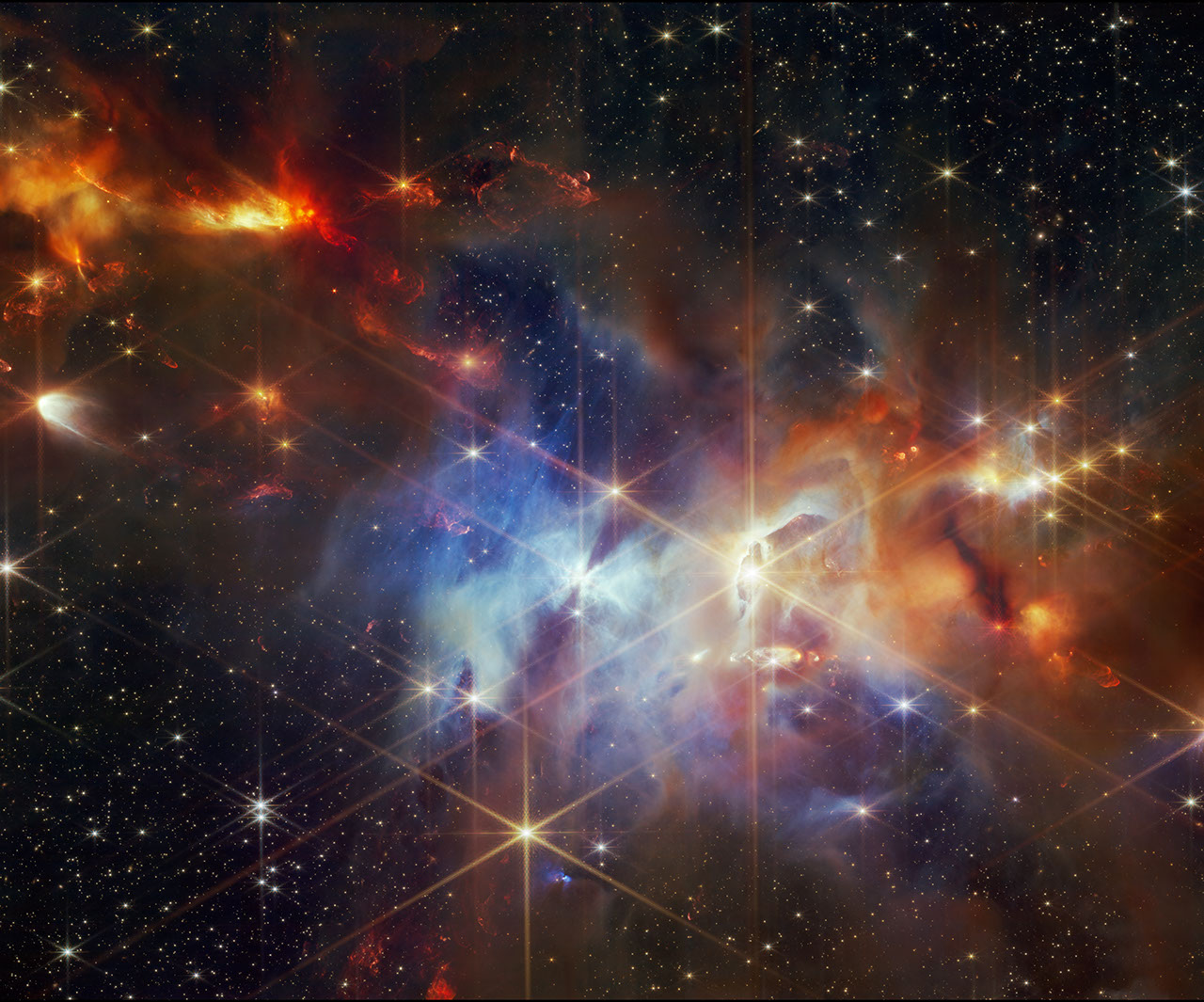
This image shows the center of the Serpens Nebula as seen by NASA’s James Webb Space Telescope’s Near-Infrared Camera (NIRCam).
The Serpens Nebula, located 1,300 light-years from Earth, is home to a particularly dense cluster of newly forming stars (~100,000 years old), some of which will eventually grow to the mass of our Sun. Webb’s image of this nebula revealed a grouping of aligned protostellar outflows (seen in the top left). These jets are signified by bright clumpy streaks that appear red, which are shock waves from the jet hitting surrounding gas and dust.
In this image, throughout the region, filaments and wisps of different hues represent reflected starlight from still-forming protostars within the cloud. In some areas, there is dust in front of that reflection, which appears here with an orange, diffuse shade.
About the Object
- R.A. PositionR.A. PositionRight ascension – analogous to longitude – is one component of an object's position.18:29:56.91
- Dec. PositionDec. PositionDeclination – analogous to latitude – is one component of an object's position.+1:14:45.77
- ConstellationConstellationOne of 88 recognized regions of the celestial sphere in which the object appears.Serpens
- DistanceDistanceThe physical distance from Earth to the astronomical object. Distances within our solar system are usually measured in Astronomical Units (AU). Distances between stars are usually measured in light-years. Interstellar distances can also be measured in parsecs.1,300 light-years
- DimensionsDimensionsThe physical size of the object or the apparent angle it subtends on the sky.Image is about 4.8 arcminutes across (1.4 light-years)
About the Data
- Data DescriptionData DescriptionProposal: A description of the observations, their scientific justification, and the links to the data available in the science archive.
Science Team: The astronomers who planned the observations and analyzed the data. "PI" refers to the Principal Investigator.The Webb observations include those from program 1611 (K. Pontoppidan). Image Processing: Alyssa Pagan (STScI)
- InstrumentInstrumentThe science instrument used to produce the data.NIRCam
- Exposure DatesExposure DatesThe date(s) that the telescope made its observations and the total exposure time.26 April 2023, 12 May 2023
- FiltersFiltersThe camera filters that were used in the science observations.F140M, F210M, F360M, F480M
- Object NameObject NameA name or catalog number that astronomers use to identify an astronomical object.Serpens Nebula, HBC 672, [EC 92] 82
- Object DescriptionObject DescriptionThe type of astronomical object.Reflection nebula and star forming region
- Release DateJune 20, 2024
- Science ReleaseFirst-of-Its-Kind Detection Made in Striking New Webb Image
- CreditImage: NASA, ESA, CSA, STScI, Klaus Pontoppidan (NASA-JPL), Joel Green (STScI)

This image is a composite of separate exposures acquired by the James Webb Space Telescope using the NIRCam instrument. Several filters were used to sample medium wavelength ranges. The color results from assigning different hues (colors) to each monochromatic (grayscale) image associated with an individual filter. In this case, the assigned colors are: Blue: F140M, Cyan: F210M, Orange: F360M, Red: 480M
Related Images & Videos
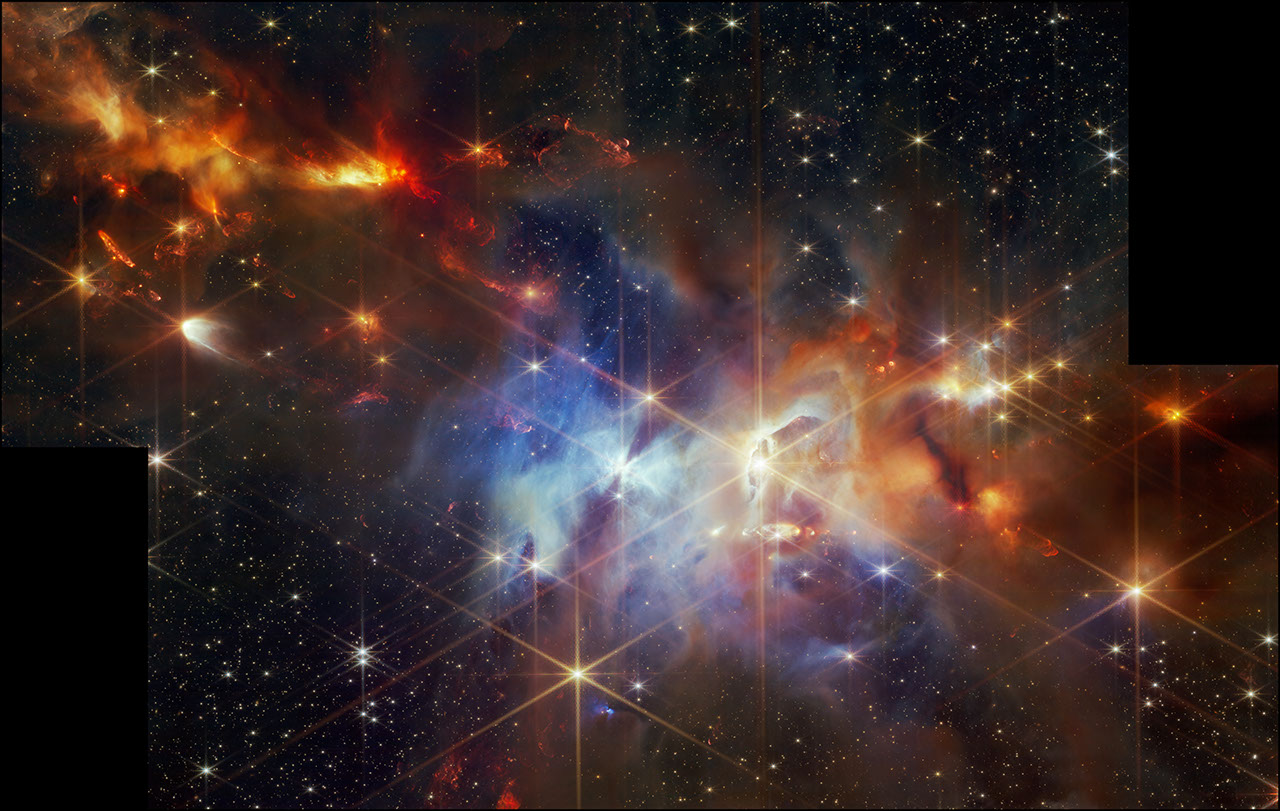
Serpens (NIRCam Image)
In this image of the Serpens Nebula from the Near-Infrared Camera (NIRCam) on NASA’s James Webb Space Telescope, astronomers found a grouping of aligned protostellar outflows within one small region (the top left corner). In the Webb image, these jets are signified by bright...
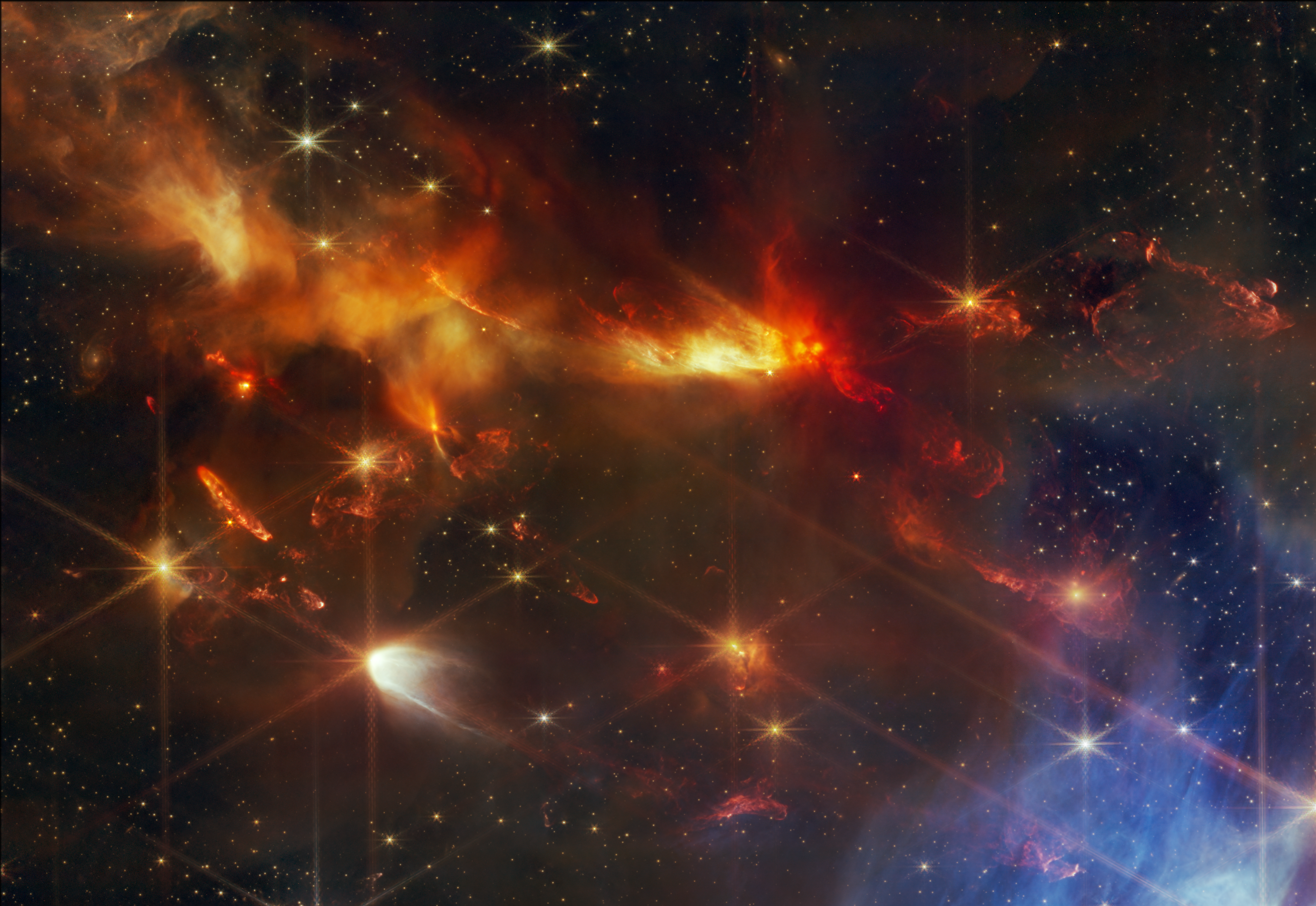
Serpens North – Aligned Outflows Crop (NIRCam Image)
This image from NASA’s James Webb Space Telescope shows a portion of the Serpens Nebula, where astronomers discovered a grouping of aligned protostellar outflows. These jets are signified by bright clumpy streaks that appear red, which are shock waves from the jet hitting...
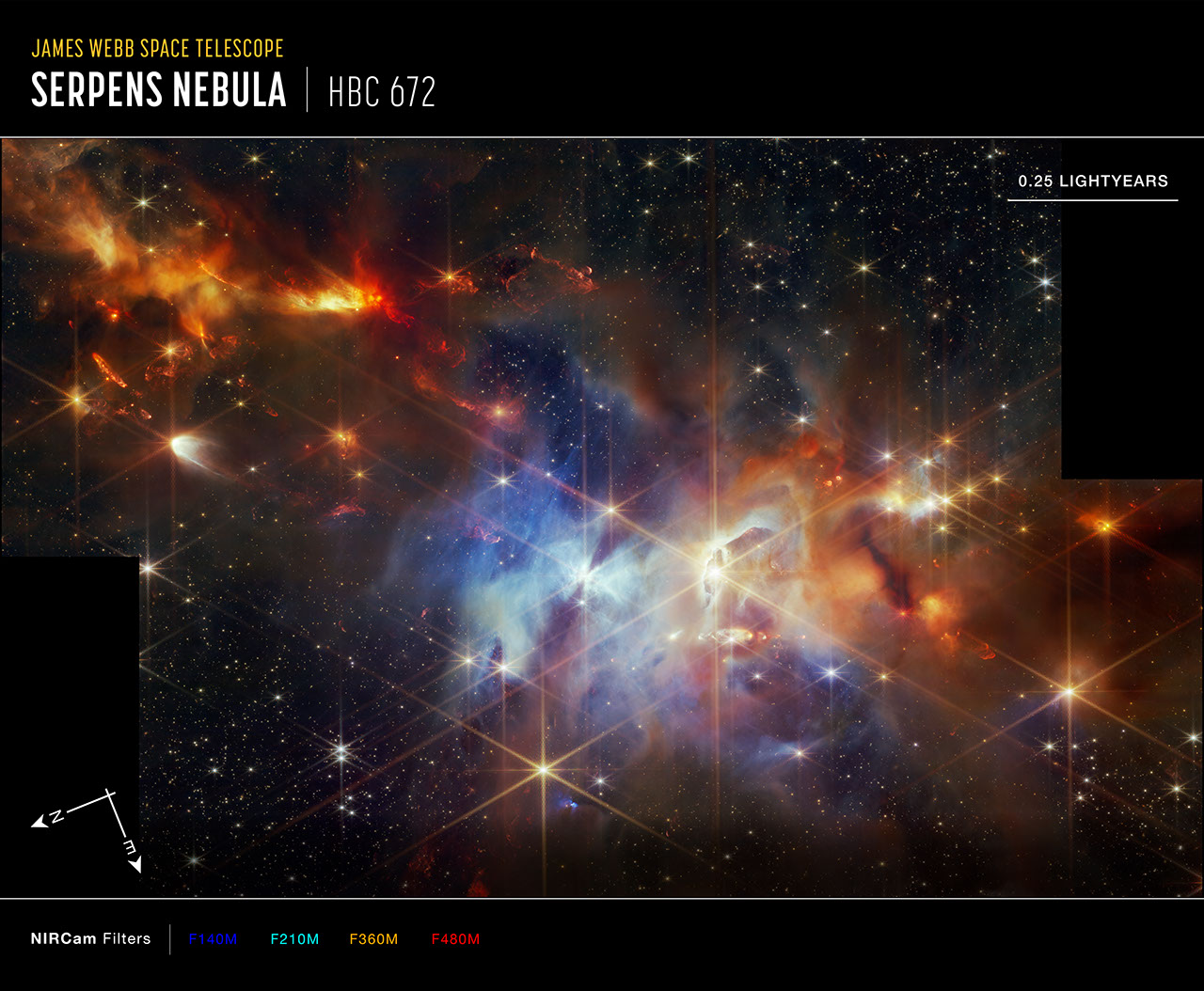
Serpens (NIRCam Compass Image)
This image of the Serpens Nebula, captured by Webb’s Near-Infrared Camera (NIRCam), shows compass arrows, scale bar, and color key for reference. The north and east compass arrows show the orientation of the image on the sky. Note that the relationship between north and east on...
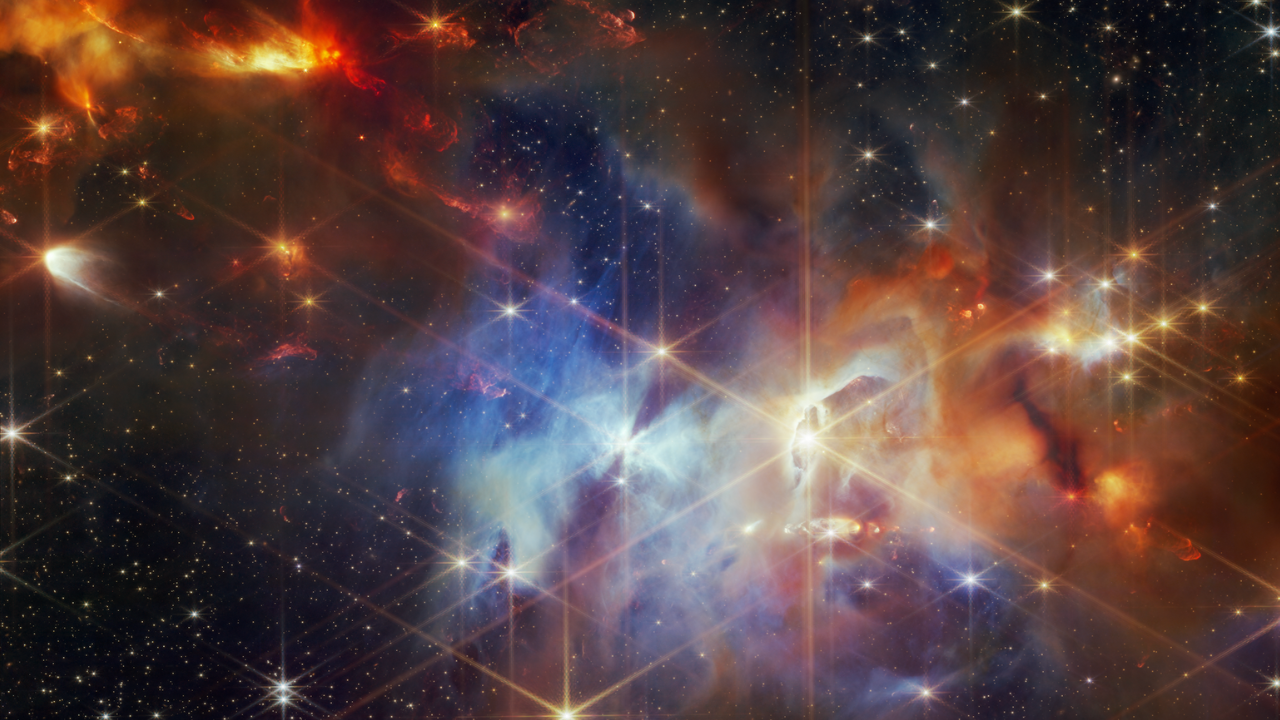
A Tour of the Serpens Nebula
This video tours the Serpens Nebula, a star-forming region that lies 1,300 light-years away from Earth. A new image of Serpens from NASA’s James Webb Space Telescope shows an intriguing group of aligned protostellar outflows within one region of the nebula. Protostellar outflows...

Zoom to the Serpens Nebula
This zoom-in video shows the relative location of the Serpens Nebula on the sky. It begins with a ground-based photo by the late astrophotographer Akira Fujii, then transitions into a plate from the Digitized Sky Survey. Next, an image from NASA’s Spitzer Space Telescope...
Share
Details
Laura Betz
NASA’s Goddard Space Flight Center
Greenbelt, Maryland
laura.e.betz@nasa.gov
NASA, ESA, CSA, STScI, Klaus Pontoppidan (NASA-JPL), Joel Green (STScI)






























